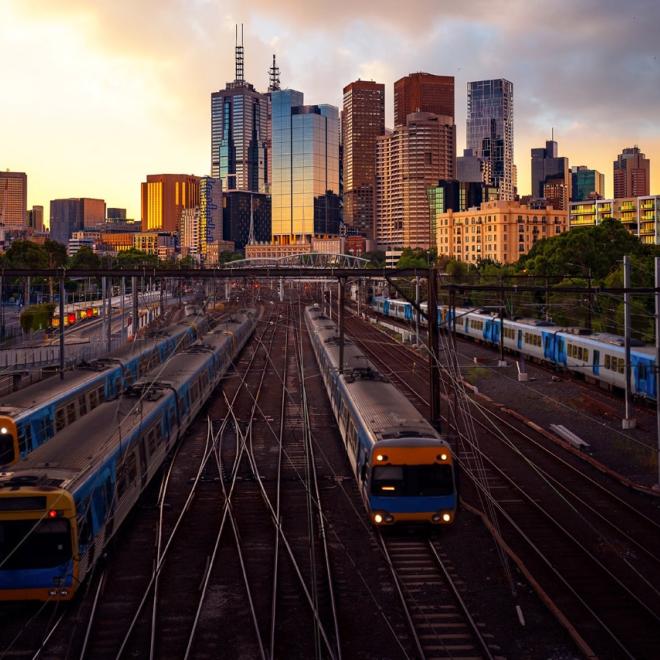Fast, safe, efficient land transport
Rail is critical to Australia’s economy.
It transports 56% of the nation’s freight and is expected to meet 72% of growth in demand over the next decade.
Australian governments have committed more than $155 billion to rail projects over the next 15 years to expand and modernise rail networks.
New rail lines are connecting more people to jobs and opportunities. Advanced signalling and train control systems are creating faster, safer and more frequent services. And innovative technologies, including network management systems and real-time travel information are making travel more seamless.
Importantly, rail is playing a big part in decarbonising transport.
Moving towards a high-tech future
Australia’s rail network is a reflection of its history and the evolution of separate state-based networks and private systems. Over time different standards and rules have been adopted to suit specific conditions and circumstances. Today we have
- 18 networks
- 3 different railway gauges, and
- 11 separate signalling systems.
To accommodate these differences, training has largely been bespoke and qualifications not always recognised across borders.
Meanwhile, with skills and labour shortages being felt across the country, rail is having to compete for workers with other sectors like construction and mining.
At the National Rail Skills Hub, we are working with industry, government agencies and the education sector to address these challenges.
We're working to find better ways to upskill and reskill rail workers. We want to ensure they have the digital competencies they need as their roles adapt to the introduction of new technologies.
The Hub is raising the profile of rail. We're identifying and showcasing the wide range of jobs that rail offers and the opportunities open for people seeking a career less ordinary.
By working closely with our industry and education partners, we're finding ways to streamline training and accreditation. This will help workers move around the country according to demand and create their own pathways to exciting and sustainable careers.

AUSTRALIAN RAIL BY NUMBERS
• 18 rail networks, 11 signalling systems and many different train control and safety management systems
• more than 50 rail operators
• Supports 900 businesses
• Contributes around $30 billion to the Australian economy
• Employs more than 165,000 people directly and indirectly
• Will need 70,000 extra workers over he next 10-15 years to meet growing demand


